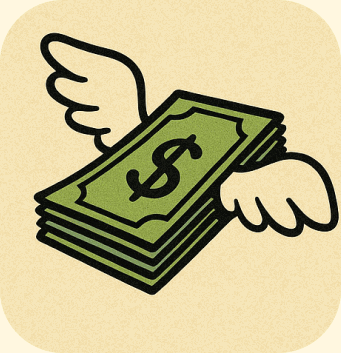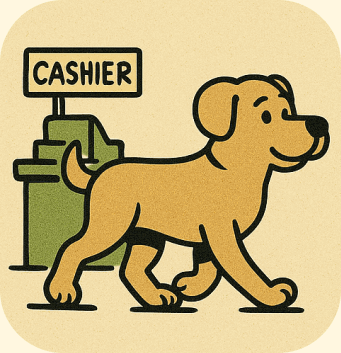Reimagining the Restaurant Checkout Experience
Tips Were Dropping—eeeek!
So We Redesigned the Moment That Matters
*Due to Non-Disclosure Agreements, specific details and visuals from this project are omitted to maintain confidentiality.
Business Goals
Global Payments aimed to improve the tipping experience in Genius by reducing drop-offs during checkout. Customers often walked away mid-flow, leading to lost tips and reviews. The redesigned display focused on speed, clarity, and keeping users engaged through the full transaction.
My Plan
Create a frictionless journey, encouraging users to complete the flow and leave a tip.
My Role
Lead Designer
As the lead designer for the customer display redesign, I owned the end-to-end design process, collaborated across teams, and drove strategic decisions that shaped the product experience from concept to delivery.
Team Delegation:
Managed weekly design timelines and assigned tasks based on team strengths to keep progress steady and efficient.
Design Ownership:
Led the visual and UX direction of the POS flow, ensuring clarity, consistency, and responsiveness across the new 13” customer-facing screen.
Cross-Functional Communication
Requests for easier integration with other data sources or marketing tools to create a more holistic view of digital marketing efforts.
Execution Oversight
Delivered high-fidelity prototypes and partnered with engineers to ensure smooth handoff and accurate build of the new experience.
Before the Glow Up
The original flow displayed only one screen at a time, causing confusion about what came next. Customers often tapped once and assumed they were done, leading to frequent drop offs before tips or reviews were completed.
Identifying Drop-Off Triggers and Opportunity Areas
Missed Revenue Opportunities
Since tipping and reviews were not surfaced up front, users often skipped them altogether. This led to fewer completed interactions, less feedback for merchants, and reduced tip volume.
Mismatched Button Priority
The call-to-action lacked proper hierarchy. The button styling unintentionally signaled finality. Rather than guiding the user to continue, it caused confusion. This small visual cue had a big impact on user behavior.
Confusion meant Drop-offs
The screen advanced only after a user tapped, with no indicators that more steps would follow. This made customers believe the interaction was complete after the first screen, causing them to walk away before leaving a tip or signature.
“ JZ, was there any research involved??”
You’re probably asking yourself,
Sure was! But, sorry, amigos
•
•
•
Research and analysis under NDA ••
Research and analysis under NDA ••
I can, however, share…
My research and testing methodologies used for this project:
Competitive Analysis:
Researched leading restaurant POS platforms to benchmark UX patterns, pricing structures, and feature gaps.
Customer Journey Mapping
Mapped merchant onboarding and ordering workflows to highlight drop-off points and identify friction in the checkout experience.
Insight synthesis
Consolidated qualitative and quantitative data into digestible insights to guide design priorities, wireframes, and product direction.
Leveraging Internal Insights
During this phase, we referenced our main target audience, drawn from client feedback, internal team knowledge, and industry context. This helped us validate key needs and behaviors without requiring new interviews.
My Process
-
To meet our tight four-week timeline, I focused on:
Organizing the design workflow based on team strengths.
Delegating the lower-risk login flow to a junior designer, while a fellow senior designer and I focused on the overall UX and branding.
-
I led the end-to-end design and prototyping of the core customer-facing flow, while my teammate contributed to brand alignment, visuals, and UX refinement.
-
I helped plan and lead recurring syncs with PMs to gather and clarify requirements and product feedback
This allowed us to quickly align on priorities and iterate with speed and intention
-
I made sure we were all utilizing our time intentionally
Midway through the sprint, I proposed shifting from twice-weekly meetings to weekly check-ins with PMs.
This gave the design team more heads-down time while maintaining alignment and momentum.
Making tipping irresistible
Let’s keep users engaged through the full payment experience by surfacing tips, reviews, and sign-offs in one seamless, attention-holding flow before they can ghost.
The Results
Consolidate the tipping and review steps into one interactive screen, introduce smart visual cues that suggest more is coming, and create a frictionless journey that encourages users to complete the flow and leave a tip.
Reflection
*
Reflection *
How I grew
I strengthened my ability to delegate tasks and lead cross-functional efforts across design and product.
I improved how I collaborate with product managers, creating clarity on goals and alignment across verticals.
I developed more confidence in making fast, informed decisions—even without formal user interviews—by leaning into internal insights and customer-facing teams.
What I learned
I saw how small UX decisions, like modifier placement or tipping flow, can have a big impact on real-world merchant efficiency.
I learned to prioritize user value and feasibility under time constraints, making tradeoffs without compromising on core experience.
What I’d do differently
I would advocate for earlier usability testing to validate flow assumptions and catch edge cases.
I’d bring engineers into ideation sooner to surface technical constraints before design handoff.
I’d set clearer expectations around multi-department handoffs to minimize back-and-forth in execution phases.
*What’s next *
I’d love to build a merchant-facing research repository to inform future iterations and improve cross-team alignment in the long term.



